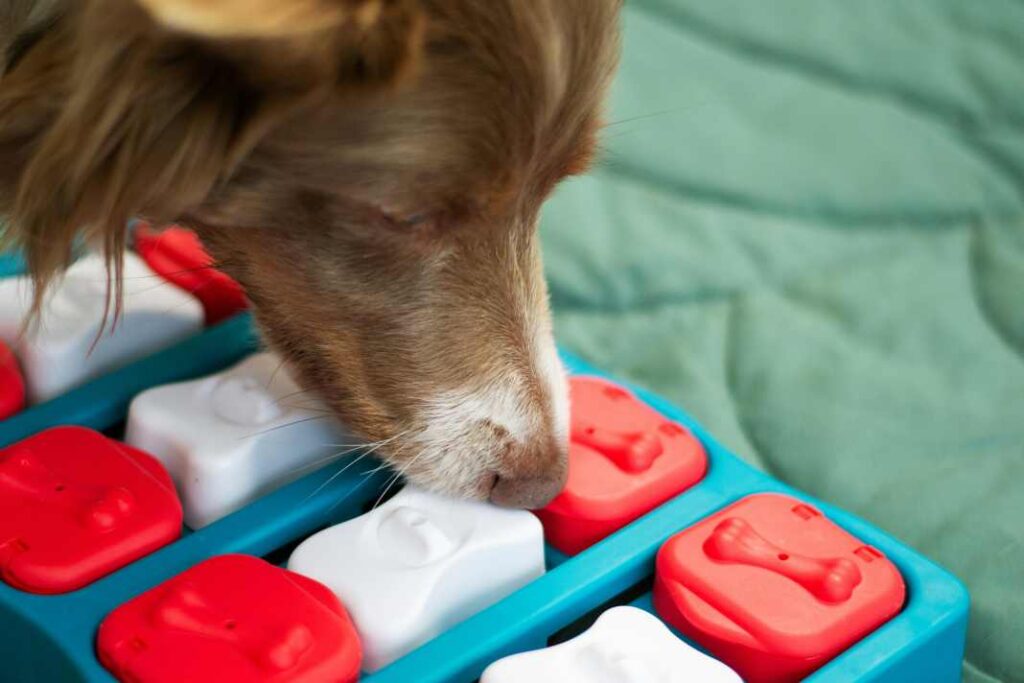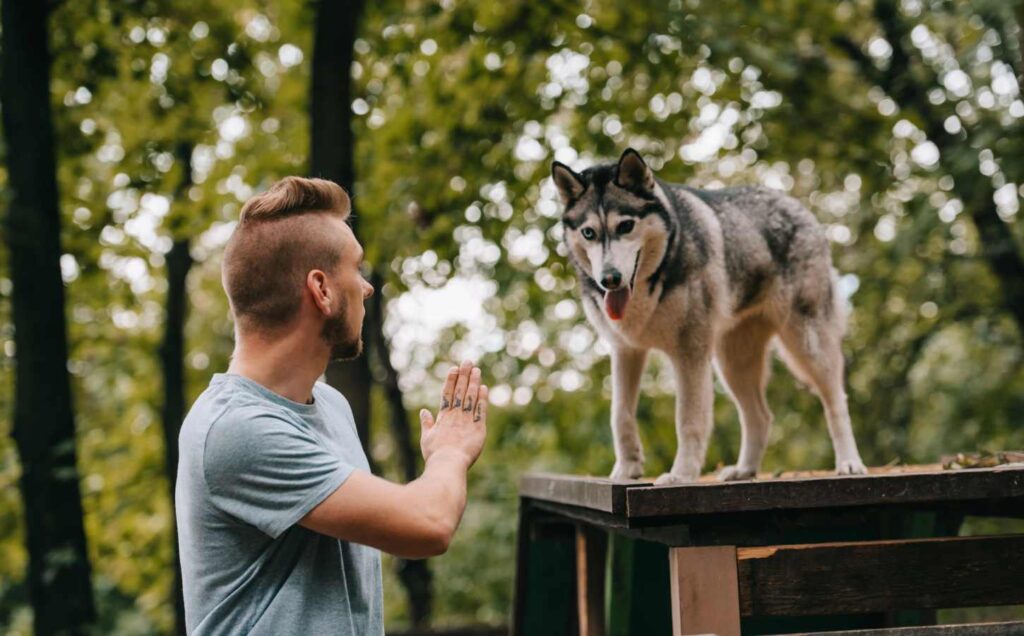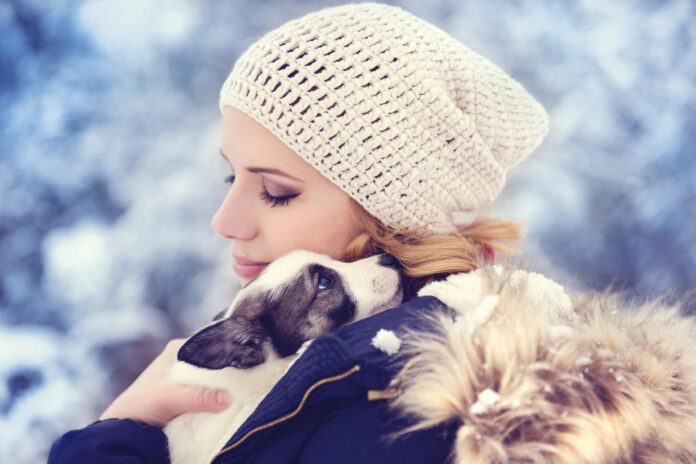As winter approaches, pet owners face the challenge of ensuring their dogs remain safe and comfortable in colder conditions.
Keeping a dog’s environment warm and monitoring their outdoor time can prevent cold-related injuries and ensure they remain in good spirits. Winter can introduce hazards like ice and snow, making it essential to prioritize safety measures during this season.
To protect their furry friends, owners should consider investing in proper winter gear such as dog coats and booties. These items not only provide warmth but also safeguard against slippery surfaces that can lead to falls. Additionally, maintaining regular vet visits throughout the winter can help identify any emerging health issues related to the changing climate.
Engaging dogs with indoor activities is crucial during the winter months when outdoor playtime may be limited. Incorporating puzzle toys and training exercises keeps them mentally stimulated and reinforces their bond with their owner. Ensuring a safe and enjoyable winter for dogs requires attention to both physical care and emotional well-being.
Understanding Winter Risks for Dogs
Winter presents unique challenges for dogs, requiring owners to be vigilant about the risks associated with cold weather. Hypothermia and frostbite can threaten a dog’s safety, while certain substances can pose toxic hazards.
Recognizing Hypothermia and Frostbite
Dogs can suffer from hypothermia when exposed to cold for prolonged periods. Signs include shivering, lethargy, and decreased responsiveness. If a dog seems disoriented or has difficulty moving, these may be indicators of serious cold-related issues.
Frostbite typically affects the ears, paw pads, and tail. Symptoms include red or pale skin, swelling, and blistering. Owners should promptly consult a veterinarian if they suspect their dog may have frostbite.
To prevent these conditions, limit outdoor exposure during extreme temperatures. Providing a warm, dry shelter is essential. Protective gear, like dog sweaters or booties, can also help keep a dog warm.
Toxic Substances to Avoid
Owners should be aware of various substances that can be harmful during the winter months. Antifreeze is particularly dangerous, as it has a sweet taste that can attract dogs. Even small amounts can lead to severe kidney damage or death.
Another common hazard is rock salt, used for melting ice. It can irritate the paw pads, causing discomfort or injury. To avoid this, pet owners can use pet-safe de-icers.
Always check labels for ingredients in products used around the home. Keeping dangerous substances out of reach protects dogs from potential harm during the winter season.
Appropriate Dog Winter Wear
Keeping a dog warm and protected during winter months is vital for their well-being. Choosing suitable clothing and footwear can significantly enhance a dog’s comfort and safety.
Choosing the Right Doggy Sweaters and Jackets
When selecting a sweater or jacket for a dog, consider the material. Look for options made of warm, breathable fabrics like wool or fleece. These materials help regulate body heat while allowing moisture to escape.
Fit is crucial. A well-fitting dog jacket should cover the back, neck, and belly without restricting movement. Measure your dog’s dimensions carefully and use size charts provided by manufacturers.
Colors and styles are varied, allowing for personalization. Bright, reflective designs enhance visibility during short winter days. Always prioritize properties like insulation and water resistance for colder climates.
If you are thinking about investing in waterproof winter clothing for your dog, I recommend you checkout these Reversible Dog Jackets by Kuoser* on Amazon.
*This page contains Amazon.com affiliate links, which means I may earn a small commission should you buy a product featured on this page. At no extra cost to you.
The Importance of Foot Protection
Winter conditions can be harsh on a dog’s feet. Booties or dog boots are essential for protecting their paw pads from ice, salt, and cold. Look for boots made of durable, waterproof materials that provide a secure fit.
When selecting booties, ensure they have a non-slip bottom for grip. A proper fit is vital; they should not slide off but must allow for comfortable movement.
Regularly check the condition of your dog’s feet. Foot pads can become chapped or cracked in harsh conditions, so applying a protective balm can help maintain their health. This ensures every winter outing is safe and enjoyable for furry companions.
Outdoor Safety Measures
Ensuring safety during winter walks and outdoor activities is essential. Attention to walking practices and proper visibility can greatly enhance a dog’s safety and enjoyment.
Safe Walking and Exercise Practices
When walking a dog in winter, using a sturdy leash is crucial. Avoid retractable leashes in slippery conditions, as they can lead to loss of control. Opt for a leash that provides a secure grip, especially in wet or snowy weather.
Choose safe walking routes to minimize hazards. Avoid icy sidewalks and areas with heavy snow accumulation. Regular snow removal from trails can also help prevent accidents.
Consider the dog’s exercise needs. Shorter, frequent walks may be more manageable in cold weather. Choosing times when the sun is out can also help warm the air. In extreme cold, minimize outdoor time to prevent frostbite and hypothermia.
Proper Identification and Visibility
Visibility is vital during winter months, especially in low light. An ID tag that includes current contact information is essential. Reflective collars and harnesses can enhance visibility.
In addition to reflective gear, consider using a flashlight or headlamp during walks. This increases visibility for both the dog and the owner. Using bright colors for the dog’s gear can also make finding them easier in snow or poor lighting.
Be aware of the ground conditions. Pet-safe ice melt should be used on sidewalks to prevent slips. Regular checks of the dog’s paws for ice buildup or injuries can help maintain foot safety and comfort.
Indoor Comfort and Safety
Creating a safe and warm indoor space is essential for a dog’s well-being during winter. It is important to provide a comfortable environment, especially for senior dogs who may have specific needs.
Maintaining a Warm and Safe Home Environment
During colder temperatures, this can be challenging. Ensuring a consistent heating source is vital for keeping a dog warm. Consider using space heaters with safety features or central heating systems.
A cozy bed is also essential. Look for heated beds that provide extra warmth, or use blankets to create a comfortable sleeping area. Place the bed in a draft-free zone away from windows and doors.
Regular checks for hazards are important. Remove any items that could cause slips or falls, especially during wet weather. Keeping the area clean will also prevent any health issues.
Special Considerations for Senior Dogs
Senior dogs may experience arthritis or joint pain, which can be exacerbated by cold weather. Providing extra bedding or a heated bed can improve comfort.
Regular gentle exercise indoors helps maintain mobility. Short walks or play sessions can keep a senior dog’s spirits high.
Be mindful of their health. Make sure they have easy access to food and water, and consider placing their bowls in a warm area. Monitoring any changes in behavior can provide insight into their comfort levels.
Paw and Skin Care
Winter can be particularly tough on a dog’s paws and skin. To ensure comfort and health, proper care routines are essential for preventing damage and maintaining hydration.
Preventing and Treating Dry or Cracked Pads
Dry or cracked pads can cause significant discomfort for dogs during winter. To prevent this, it’s important to regularly inspect their paws for signs of dryness or cracking.
Tips for care:
- Moisturize: Apply a quality paw balm or moisturizer suited for pets. These products help restore moisture and create a protective barrier.
- Clean regularly: After walks, wipe their paws to remove salt and chemicals that can contribute to cracking.
- Limit exposure: On extremely cold days, reduce outdoor time or use booties to protect their paws.
If cracks do occur, consult a veterinarian for appropriate treatment methods tailored to the severity of the condition.
Importance of Paw Hydration and Protection
Hydration is key for maintaining healthy paws in winter. Dry air and cold temperatures can lead to moisture loss in a dog’s pads.
Essential practices include:
- Hydration: Ensure the dog has constant access to water to maintain overall hydration.
- Paw wax: This offers protection against cold surfaces while also serving as a barrier against harsh chemicals and ice.
- Regular check-ups: Routine vet visits are important to address any paw issues before they become serious.
By adopting these practices, dog owners can help keep their pets comfortable and free from paw-related discomfort during the winter months.
Enhancing Your Dog’s Winter Experience
Winter can be a challenging time for dogs, but there are several ways to enrich their lives, keeping them happy and engaged. Fun, interactive play and consistent exercise are crucial for keeping their spirits high during this season.
Interactive Play and Mental Stimulation
Keeping a dog mentally stimulated is essential, especially during the colder months when outdoor activities may decrease. Engaging toys, puzzle feeders, and treat-dispensing games can provide hours of entertainment.
Incorporating obedience training sessions not only strengthens the bond between owner and pet but also challenges their intellect. Hide and seek can also be a fun game; it encourages both physical movement and cognitive skills as they search for their owner or treats.
Some options include:
- Interactive toys: Machines that dispense treats or toys that require problem-solving.
- Training exercises: Teach new commands or tricks.
- Scent games: Hide treats around the house for them to find.
Keeping Active During Colder Months
Physical exercise remains vital during winter to prevent boredom and behavioral issues. Short, brisk walks are beneficial, as they allow dogs to explore their environment while staying active.
Indoor activities can also keep energy levels in check. Consider playtime with balls, frisbees, or tugging games in a safe space.
For those with access to dog-friendly indoor facilities, these can provide opportunities for fun and interaction. Dogs can social engage with other pets, helping to alleviate the winter blues.
Additional ideas for staying active include:
- Indoor agility courses: Set up obstacles for your dog to navigate.
- Doggy playdates: Arrange meetups with other dogs.
- Interactive fetch: Use soft toys for safe indoor retrieval games.
Health and Nutrition in Winter
Winter brings unique challenges for a dog’s health and dietary needs. Adjustments to their diet can support energy levels and joint health, especially in colder weather.
Adjusting Your Dog’s Diet for Winter
As temperatures drop, dogs may require a dietary shift. Increased calorie intake can help maintain body temperature and energy levels. Consider incorporating high-quality proteins and fats into their meals.
Pay attention to age and activity level. Older dogs and those with joint problems may benefit from softer foods that ease chewing. It’s crucial to monitor weight, as inactivity during winter can lead to weight gain.
Warm meals may be more appealing during winter. Gently warming dry kibble can enhance the aroma and make it more enticing. Always ensure fresh water is available, as hydration remains important, even in colder months.
Supplements and Health Checks
In winter, supplementation can support overall health. Joint supplements containing glucosamine and chondroitin can reduce inflammation and promote mobility, particularly in aging dogs.
Regular health checks with a veterinarian are vital. They can recommend specific supplements based on health status. Monitoring for conditions like arthritis is essential, especially as dogs age.
Winter can also exacerbate skin issues. Omega-3 fatty acids can help improve coat condition and skin health. Adjusting dietary supplements can promote a dog’s fitness and health through the colder months.
FAQs: How to Keep Your Dog Safe and Happy This Winter
Many dog owners have specific concerns about keeping their pets safe and comfortable during winter months. This section addresses common questions related to risks, care, and activity for dogs in cold weather.
What are the risks of leaving dogs outside in winter?
Leaving dogs outside in winter exposes them to hypothermia and frostbite. Large breeds may tolerate colder temperatures better, but smaller dogs can suffer quickly. Even if a dog has a thick coat, prolonged exposure can be dangerous.
How can I keep my dog warm during cold weather?
To keep dogs warm, owners can use dog jackets or sweaters, especially for short-haired breeds. Providing a warm, insulated shelter outdoors can also help. Ensuring that dogs have warm bedding indoors is essential during colder nights.
Are shoes necessary for dogs when walking in snow?
Dog shoes can protect paws from ice, snow, and chemical deicers. They help prevent injuries and provide traction on slippery surfaces. However, not all dogs may tolerate wearing boots, so gradual exposure is advisable.
What are signs of hypothermia in dogs?
Signs of hypothermia in dogs include shivering, lethargy, and difficulty walking. Owners may notice their pets seeking warmth or becoming disoriented. If these symptoms appear, immediate veterinary attention is necessary.
What is an appropriate indoor temperature for dogs in winter?
An indoor temperature between 68°F to 72°F is generally suitable for dogs. They need a comfortable environment, especially when they have short coats or health issues. Keeping spaces draft-free also contributes to their well-being.
How can I help my dog stay active and engaged indoors during the winter?
Indoor activities like interactive toys and puzzles can keep dogs mentally stimulated. Short training sessions and playing fetch in a hallway can offer physical exercise. Regular playtime helps maintain their happiness and reduces potential behavioral issues.
Unleashing Your Dogs Scent-sational Potential: Games to Stimulate a Dogs Sense of Smell

Credit: Photo by Ayla Verschueren
Scent games are a great indoor winter activity that can provide mental stimulation, physical exercise, and a stronger bond between dogs and their owners, while also enhancing their cognitive development, reducing stress, and fulfilling their instinctual needs.
Continue reading: Games to Stimulate a Dogs Sense of Smell
How to Train a Dog That is Not Food Motivated: Tips and Techniques

While food is a commonly used motivator in dog training, it’s important to remember that not all dogs are food motivated. Some dogs may prefer toys, praise, or other rewards instead. To identify what motivates your dog, it’s important to observe their behavior and preferences.
Continue reading: How to Train a Dog That is Not Food Motivated




